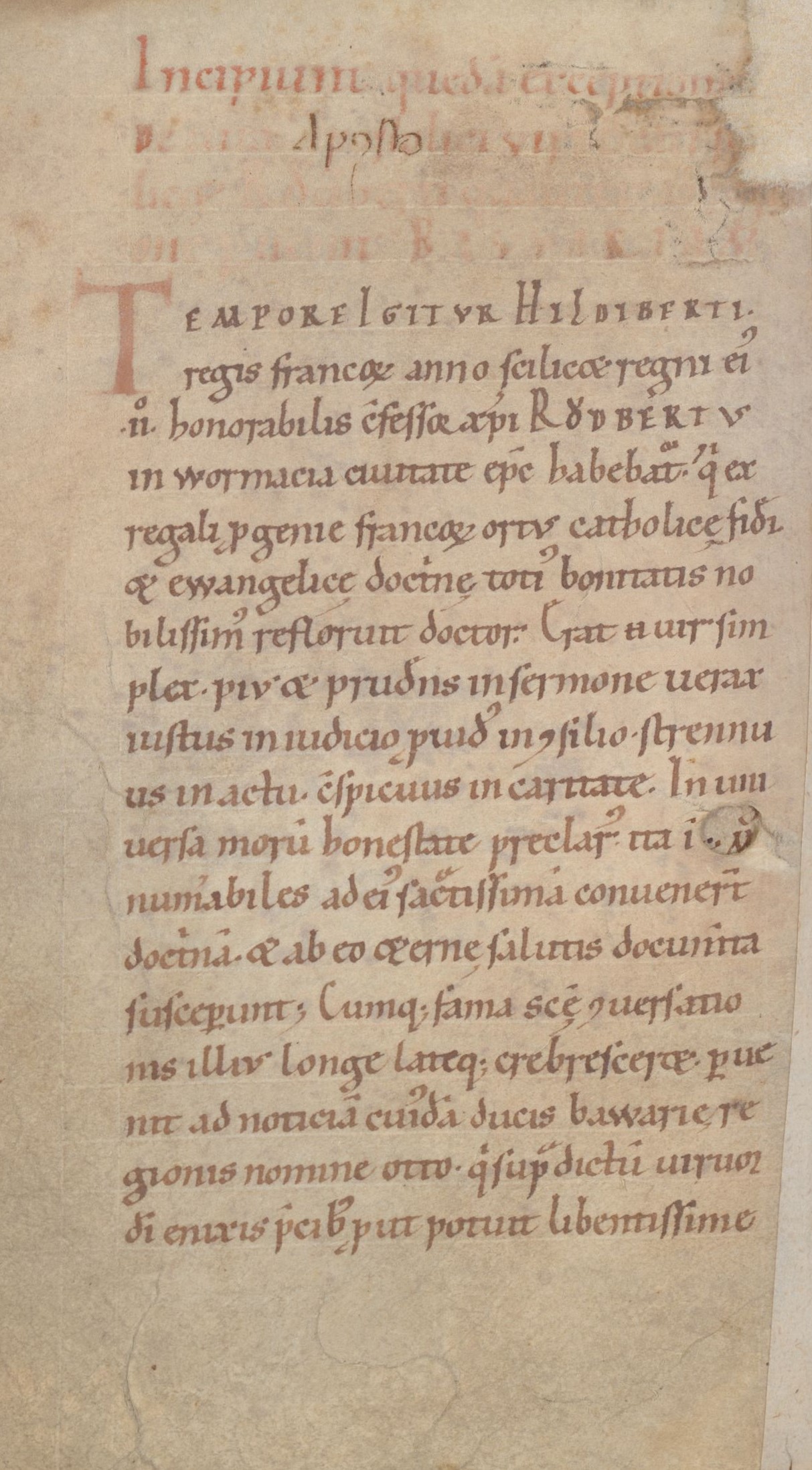|
Modestus (Apostle Of Carinthia)
Modestus ( 720 – before 772), called the Apostle of Carinthia or Apostle of Carantania, was most probably an Gaelic Ireland, Irish monk and the Anglo-Saxon mission, evangeliser of the Carantanians, an Slavic settlement of the Eastern Alps, Alpine Slavic people settling in the south of present-day Austria and north-eastern Slovenia, who were among the ancestors of present-day Slovenes. Life Modestus was an Irishman by birth, a disciple of St. Vergilius of Salzburg, Fergil. He may have come to the History of Bavaria, Bavarian lands under Duke Odilo, Duke of Bavaria, Odilo in the wake of Fergil (Vergilius), who, about 767 was consecrated Archbishopric of Salzburg, Bishop of Salzburg. Upon the request of Prince Cheitmar or Hotimir of Carantania to Christianization, Christianize his people, Bishop Vergilius dispatched Modestus around the year 755, together with four priests and a deacon "and other inferior clerks" as a missionary with the rank of a ''chorepískopos'' ( grc, Χωρε� ... [...More Info...] [...Related Items...] OR: [Wikipedia] [Google] [Baidu] |
Modestus
Modestus was a Roman cognomen. It may refer to: * Julius Modestus (1st century BC), Roman freedman and grammarian * Marcus Mettius Modestus (procurator) (1st century AD), Roman governor of Egypt * Aufidius Modestus (1st century AD), Roman philologist, commentator on Horace * Mettius Modestus, Roman consul AD 82 * Gaius Trebonius Proculus Mettius Modestus (2nd century), Roman senator * Quintus Aiacius Modestus Crescentianus, consul alongside Marcus Pomponius Maecius Probus in 228 * Saint Modestus, legendary saint and educator of Saint Vitus, martyr under Diocletian (c. 304) * Modestus, martyr at Agde alongside Saint Tiberius during the Diocletianic persecution * Domitius Modestus (fl. 358–377), Roman politician * Gaius Sollius Modestus Sidonius Apollinaris (5th century), Roman poet and diplomat * Modestus (bishop of Trier) (died 489), saint * Modestus of Jerusalem (died 630), Greek Orthodox patriarch of Jerusalem * Modestus (Apostle of Carantania) (8th century), Irish mi ... [...More Info...] [...Related Items...] OR: [Wikipedia] [Google] [Baidu] |
Conversio Bagoariorum Et Carantanorum
The ''Conversio Bagoariorum et Carantanorum'' ("The Conversion of the Bavarians and the Carantanians") is a Latin history written in Salzburg in the 870s. It describes the life and career of Salzburg's founding saint Rupert (d. 710), notably his missionary work in Bavaria, and the activities of the bishops and abbots in the Archdiocese of Salzburg. It concludes with a brief history of Carantania. The work may have been written by Adalwin himself, the then resident Archbishop of Salzburg. It was intended to give Louis the German a particular historical perspective on a recent collision between the missionary work conducted from Salzburg and that pursued by the brothers Cyril and Methodius, who preached the new religion among the Slavic people of Great Moravia and Pannonia. The 3 manuscripts refer to a church consecrated for Pribina Pribina (c. 800861) was a Slavic prince whose adventurous career, recorded in the '' Conversion of the Bavarians and the Carantanians'' (a hi ... [...More Info...] [...Related Items...] OR: [Wikipedia] [Google] [Baidu] |
Virgin Mary
Mary; arc, ܡܪܝܡ, translit=Mariam; ar, مريم, translit=Maryam; grc, Μαρία, translit=María; la, Maria; cop, Ⲙⲁⲣⲓⲁ, translit=Maria was a first-century Jewish woman of Nazareth, the wife of Joseph and the mother of Jesus. She is a central figure of Christianity, venerated under various titles such as virgin or queen, many of them mentioned in the Litany of Loreto. The Eastern and Oriental Orthodox, Church of the East, Catholic, Anglican, and Lutheran churches believe that Mary, as mother of Jesus, is the Mother of God. Other Protestant views on Mary vary, with some holding her to have considerably lesser status. The New Testament of the Bible provides the earliest documented references to Mary by name, mainly in the canonical Gospels. She is described as a young virgin who was chosen by God to conceive Jesus through the Holy Spirit. After giving birth to Jesus in Bethlehem, she raised him in the city of Nazareth in Galilee, and was in Jerusal ... [...More Info...] [...Related Items...] OR: [Wikipedia] [Google] [Baidu] |


